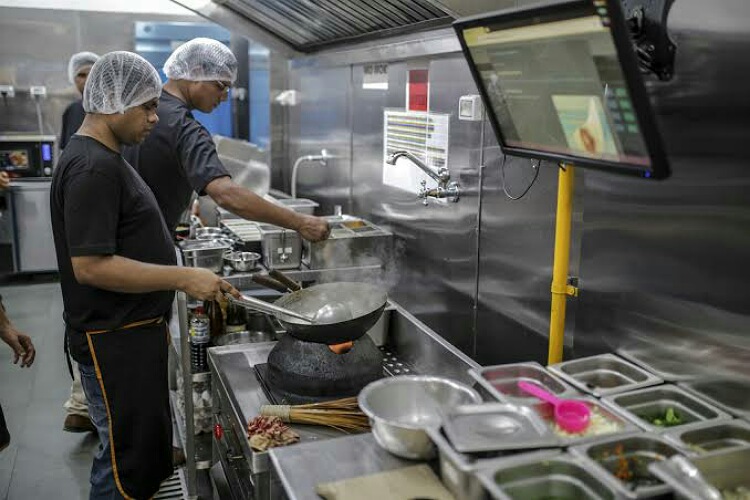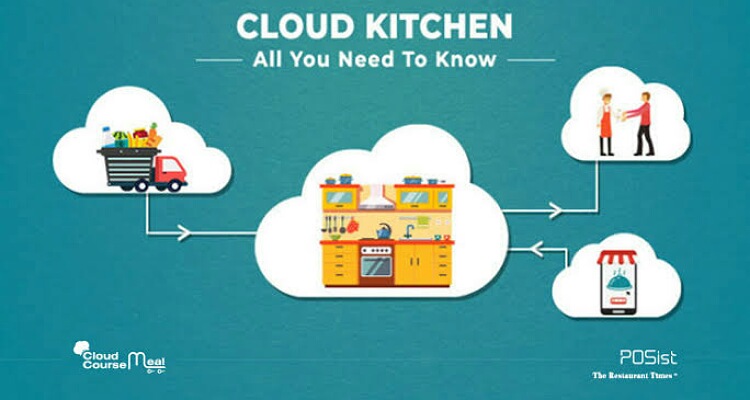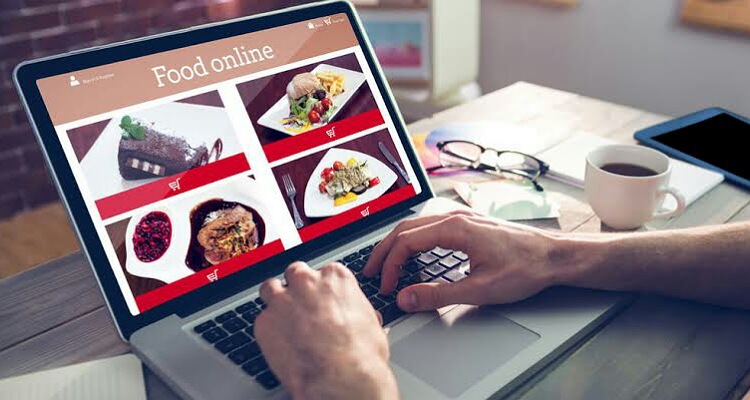Cloud kitchens are gaining popularity especially after the coronavirus pandemic when lockdown forced restaurants to shut and suffer great losses.
The food industry is rapidly evolving and the high startup costs and irritating regulations have led to more and more people going for this type of commercial activity.
What are cloud kitchens?
Cloud kitchen is also called ghost kitchen or virtual kitchen. It is a commercial kitchen space with no dine-in facilities. It means that food is cooked but only for take-aways of parcels.
Customers cannot sit and have their food there. They can order food online or by phone and it is delivered to them in their house or work place.

Cloud kitchens are not a brick and mortar location like the traditional restaurant. It needs space but only for the kitchen.
No extra space is there for sitting and dining. Hence the overhead is lessened. The startup is cheaper and there is no heavy ongoing expenditures involved.
The increasing popularity of these kitchens
Surveys have shown that the cloud kitchen use has risen 150% in 2020 when there was a global lockdown. It is expected to rise and become 10 times in the next decade.
It is now USD 35 billion and is likely to become USD 365 billion in next 10 years or so.
Many restaurant owners and new entrepreneurs are embracing this new concept. It saves them time, money, and also efforts. The commissary kitchen is easy to start and maintain. The new business people are interested to rent out this space.

And old restaurant owners would like to give up their area for this activity. The demand for online orders for food is rising and more and more restaurateurs are shifting to it.
Many kitchens also provide software for such businesses. These kitchens are usually situated in out of town areas and have ample parking places for delivery vehicles.
The driver picks up the readied foods and delivers it to the customer as fast as possible, efficiently, and smoothly.
Challenges of these kitchens
Since the concept has shifted from hospitality to a factory setup, there are no tips or direct interactions with clients. Hence staff motivation might fall.
And you might not be able to get talented people for this job. Also the staff might keep changing. There would be no consistency and food safety might decline. Training might not be so good if it has to be frequently given to new hires.

If one is using third party apps for delivery, the profits gets divided. You might have lesser margin and lesser gain in it. Since cloud kitchens are not visible, marketing has to be done and the costs might be high.
Competition is high on the narrow and crowded online market place. This makes it all the more difficult.
Also, read Potato milk: the new milk substitute trend that has health and environmental benefits!
The food reaching the customer has to be hot, fresh, and safe. With delivery people in the middle, often problems erupt there.